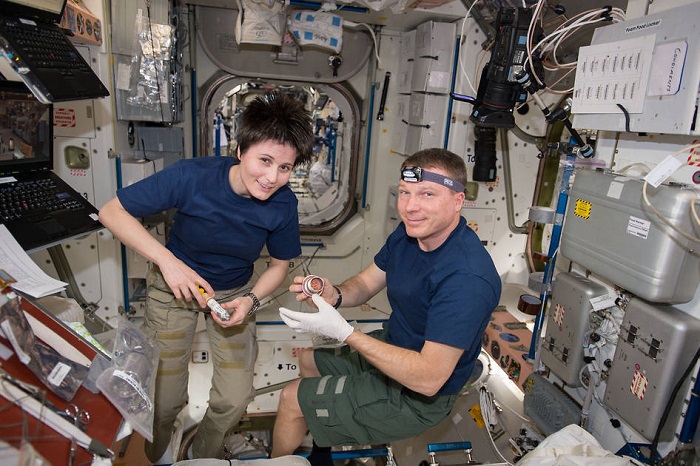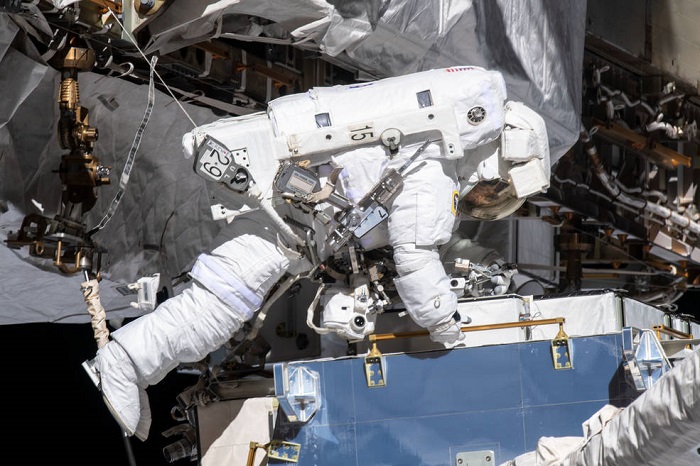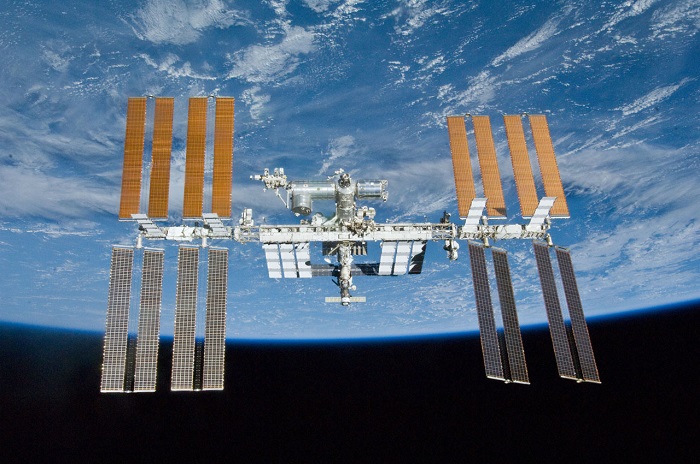ISABEL RUBIO ARROYO | Tungsteno
The International Space Station (ISS) is the largest single structure humans have ever put into space. It weighs about 400 tonnes and covers an area as large as a football field. Building it on Earth and then launching it into space in one go would have been impossible, according to the European Space Agency (ESA): "There is no rocket big enough or powerful enough." So it was taken into space piece-by-piece and gradually assembled in orbit, approximately 400 kilometres above the Earth's surface, in an assembly that required more than 40 missions.
A dream more akin to science fiction
Europe, the United States, Russia, Canada and Japan have all been involved in the construction of this iconic structure. In fact, as ESA points out, the International Space Station is the world's largest international cooperative programme in science and technology. "The idea of a space station was once science fiction," explains the US National Laboratory of the International Space Station.
But what was only a dream a century ago came to fruition decades later. On 25 January 1984, US President Ronald Reagan ordered NASA to build the ISS: "Just as the oceans opened up a new world for clipper ships and Yankee traders, space holds enormous potential for commerce today." On 20 November 1998, the Zarya Functional Cargo Block blasted off its launch pad atop the Proton-K rocket into the cold winter skies above Kazakhstan. Zarya, which had been built in Moscow but funded by the US, served as a temporary control module for the nascent ISS. Although construction of the station took place mainly between 1998 and 2011, it is continually evolving to include new missions and experiments.
The International Space Station is the world's largest international cooperative science and technology programme. Credit: NASA
More than 260 visitors in two decades
Astronaut Bill Shepherd and cosmonauts Yuri Gidzenko and Sergei Krikalev became the first crew to reside aboard the station in November 2000. They spent four months there and kicked off more than 20 years of continuous human presence in space. Since then, the ISS has welcomed many more inhabitants. As of October 2022, 263 individuals from 20 countries have visited the ISS, including 161 Americans, 56 Russians and 11 Japanese. They have made more than 253 spacewalks to build, maintain and upgrade the station, according to NASA.
The habitable volume in the various ISS modules is larger than a six-bedroom room house. Typically, there is an international crew of seven people living and working inside the ISS. However, this number can vary during crew turnover; for example, in 2009, 13 people were on the ISS at the same time. The ISS has become a floating scientific laboratory where more than 3,000 research projects have been carried out. In just six months, up to 350 experiments are often conducted aboard the station, ranging from tests on all kinds of animals to sending one astronaut into space and leaving his twin behind on Earth, in order to compare the health of both men.

ESA astronaut Samantha Cristoforetti and NASA astronaut Terry Virts perform configuration tasks on board the ISS. Credit: NASA
The Sun, the Moon and the International Space Station
The ISS orbits the Earth at an average altitude of 400 kilometres. It circles the globe every 90 minutes at a speed of about 28,000 kilometres per hour. According to the website Space, it covers the same distance in one day as a trip from the Earth to the Moon and back. The structure is one of the brightest objects in the sky, after the Sun and the Moon. To see it from Earth, look for a point of bright white light moving quickly across the sky. "The light will be constant, so if it flashes, or you see red lights, that's a plane," reports BBC Science Focus. NASA has a website to track when the ISS is visible from a given location.
As the International Space Station orbits the Earth, its four pairs of solar panels absorb energy from the Sun to provide electrical power to the structure. In early 2021, NASA announced their refurbishment: "Though they are functioning well, the current solar arrays are showing signs of degradation, as expected." In addition, the ISS also has a water recovery system that recycles about 93% of its wastewater. This is a tricky task, according to NASA's Bob Bagdigian: "In space, it becomes quite a challenge to distil any liquid in the absence of gravity."

Over the years, more than 253 spacewalks have been made to build, maintain and upgrade the station. Credit: NASA
The end of the International Space Station
Current plans call for the ISS to be operated until 2024. But, according to NASA, this date is likely to be extended to 2030. Maintaining this station costs about $3 billion a year, about a third of NASA's annual human spaceflight budget. In July 2022, Russia announced that it will withdraw from the ISS after 2024. The country, internationally condemned for its invasion of Ukraine, aims to build a new Russian Orbital Space Station around 2028. In theory, the Russian withdrawal will be gradual.
It is unclear what will be done with this structure once 2030 arrives. Various alternatives have been explored: from de-orbiting it to recycling its components for future commercial space stations in orbit. Until then, NASA hopes the structure will serve to explore deep space, conduct research to benefit humanity, lead and encourage international cooperation and boost the US private spaceflight industry. The International Space Station still has much to contribute, as Robyn Gatens, director of the International Space Station at NASA Headquarters, says: "It is entering its third and most productive decade as a groundbreaking scientific platform in microgravity."
· — —
Tungsteno is a journalism laboratory to scan the essence of innovation. Devised by Materia Publicaciones Científicas for Sacyr’s blog.
